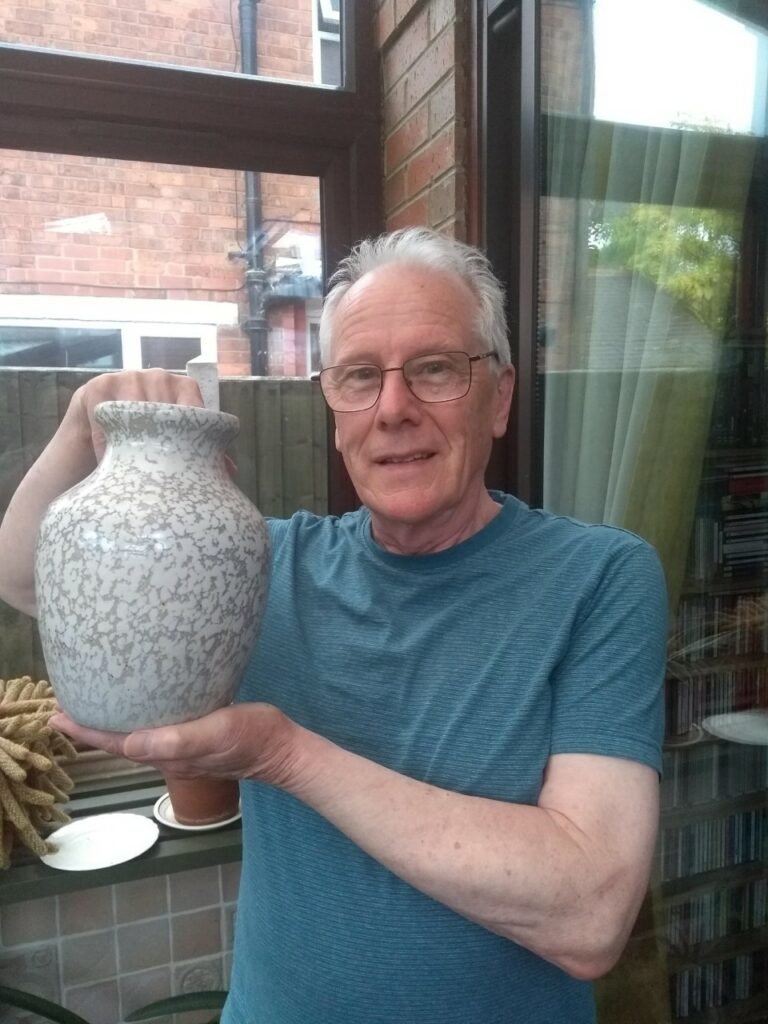Glaze Types
In the introduction to the Ruskin Pottery 1905 catalogue Howson Taylor noted the colours and glazes then available. ‘The colourings range from slightly broken single colours, to combinations of colours. The colours used are incorporated with the glazes and are therefore limited to the few oxides and colours, which will resist the great heat of the potters oven, but the colour effects are almost unlimited.’
These were the glazes Howson Taylor called soufflé wares. At that time Taylor could list blues, greens, purples, clair-de-lune, pink, crushed strawberry, yellow, turquoise and other combinations of these colours. These are the standard colours seen on pots of the period. In addition there were colours more difficult to reproduce such as special blues, robins egg blue, sang-de-boeuf, peach bloom and shagreen. Lustres were also listed including the yellow and orange ones recently developed and crystalline, which was likely a brown aventurine glaze. By the time of the 1923 catalogue mauve, greys and celadons had been added.
In the 1912 catalogue Howson Taylor claimed a new treatment of lustres; the lemon yellow and orange lustres being quite new in methods. Kingfisher blue and pearl blister lustres were further mentioned. The catalogue featured real Flambé ware, each piece being unique and unrepeatable. The colourings, textures and patternings were as varied as the number of individual pieces.
From the early 1920s two new colours, bronze and ochre-blue, began to appear as both souffles and lustres. In 1927 Howson Taylor developed a wide range of matte and crystalline glazes which were often combined with pale green, cream or dark and light blue soufflé glazes. Grey high fired glazes were produced in greater numbers in the late 1920s.
